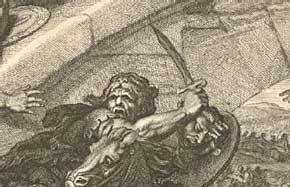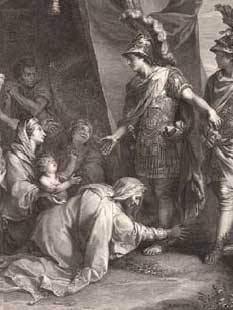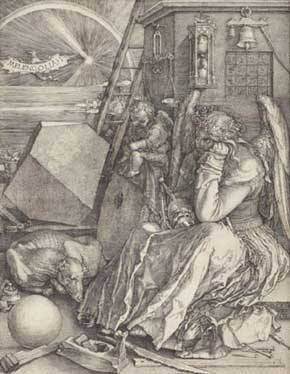
Gérard Audran (1640–1703)
After Charles Le Brun (1619–1690)
Battle at the Milvian Bridge: detail, 1666
Etching and engraving
The Getty Research Institute, Los Angeles, California (2003.PR.34)

Gérard Edelinck (1640–1707) 8.
After Charles Le Brun (1619–1690)
Queens of Persia at the Feet of Alexander: detail, ca. 1675
Etching and engraving
The Getty Research Institute, Los Angeles, California (2003.PR.42)
Printing the Grand Manner: Charles Le Brun and Monumental Prints in the Age of Louis XIV The exhibition, on view at the Getty Research Institute from May 18 through October17, 2010, explores a little-known facet of late 17th-century reproductive engravings
May 18–October 17, 2010
]]>
Source: Getty Museum
The exhibition examines the prints’ rich vocabulary and illuminates the context in which they weremade between the mid-1660s and the mid-1680s. While it focuses on the relationshipbetween Charles Le Brun (French, 1619–90) and the printmakers who reproduced hiscompositions, the exhibition also interprets the prints and their inscriptions in light of LeBrun’s ambitions and struggles as a court painter, designer, and print publisher in the highlycompetitive atmosphere surrounding Louis XIV.
The works in this exhibition and related catalog reproduce Le Brun’s narrativecompositions in the Grand Manner, the genre in which a heroic protagonist engages in amorally significant action—a battle to be won, a victory to be celebrated, or a vice to beavoided. By disseminating these subjects in printed form, Le Brun presented to both collectorsand artists his mastery of the most complex type of art. In turn, the quality and size of theseprints allowed him to demonstrate the unprecedented authority over the fine arts in France.
The eleven large prints featured in Printing the Grand Manner were clearly intendedto evoke the grandeur of Le Brun’s large-scale paintings and tapestry designs that illustrateevents from the exemplary lives of ancient rulers such as Alexander the Great and Constantinethe Great. A prodigious artist and designer, now best known for his work at Versailles, LeBrun was Louis XIV’s principal painter, leader of the Académie royale de peinture et desculpture, and director of the huge royal manufactory at the Hôtel des Gobelins, theintegrated workshops where hundreds of artists and craftsmen produced the fine objects thatgave the age of Louis XIV its veneer of splendor and grandeur.
“Le Brun used prints strategically to promote his agenda. Naturally, he wanted the bestprintmakers to reproduce his compositions and to disseminate them in the best possible light.As a painter and leader of the arts who experienced the power of prints in his own career, hewas able to encourage the development of printmaking in France,” says Louis Marchesano,the Getty Research Institute’s curator of prints and drawings. “In retrospect, we know LeBrun’s own interventions in the field of prints paid off because the material and stylisticexcellence of the large prints whet the appetites of collectors and critics well into the 19thcentury.”
Follow us on:


